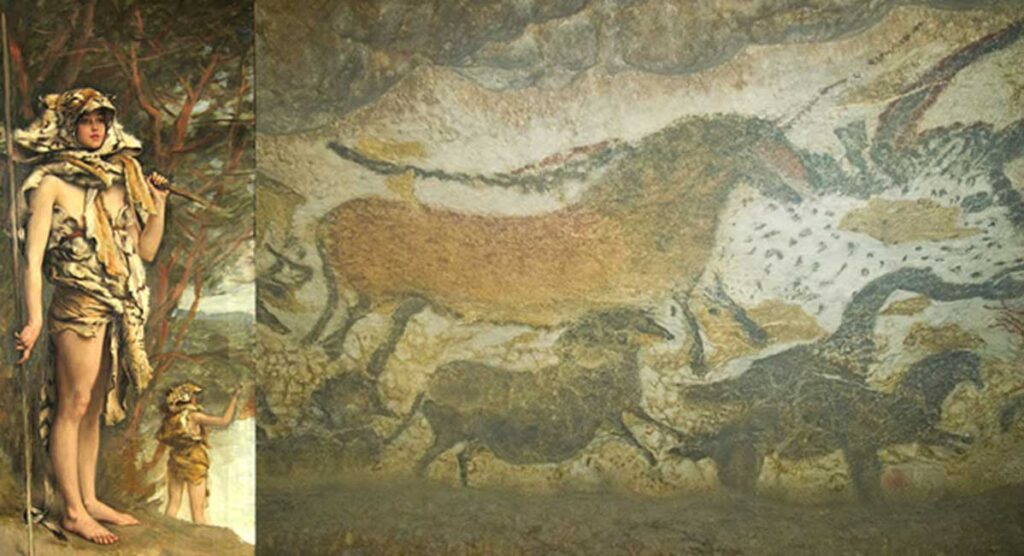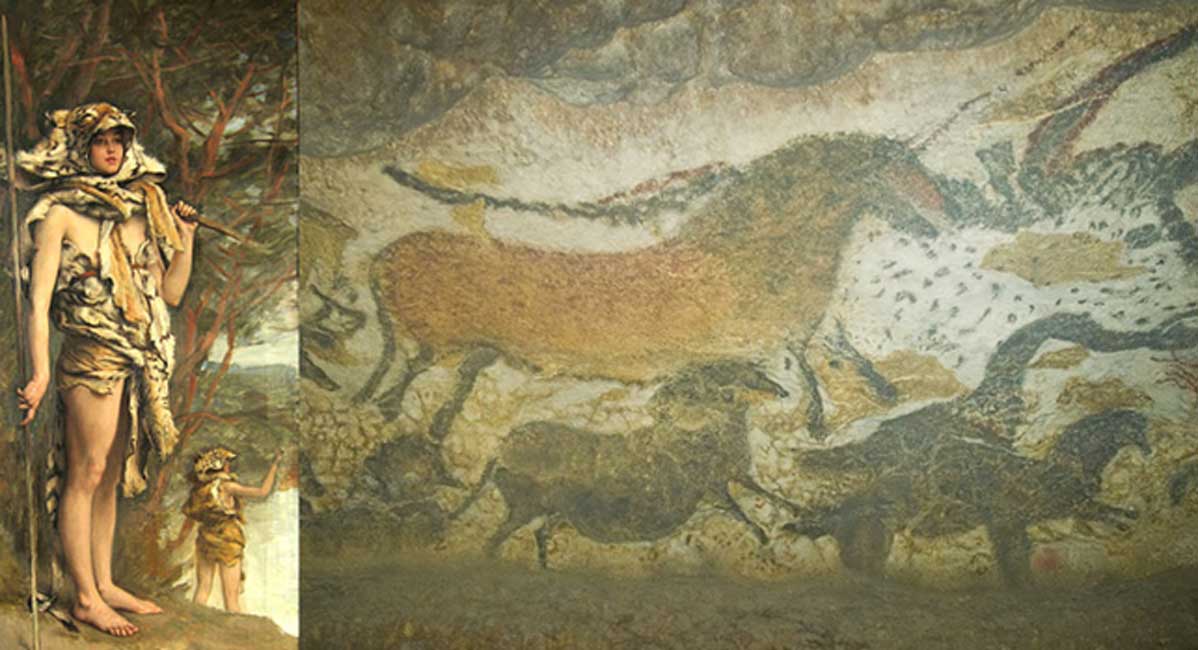

The first researchers of Paleolithic caves and sites related to the earliest humans called the people who left paintings and other pieces of early art “men.” Due to this decision, people created an image for many decades of ancient society as basically constructed around men. However, it may be necessary to rethink this theory and perhaps rewrite the history books too.
The most popular image of Paleolithic and Neolithic society was based on a patriarchal vision of the world. Men were expected to be the warriors, hunters, and creators of the culture, while women apparently stayed in the settlements to take care of children, cook, and take care of the fires.
However, this image was created through the researchers’ imagination. It is important to remember that the Paleolithic and Neolithic people didn’t leave any text or written messages. All that is known about them comes from excavation sites. While analyzing the artifacts, researchers really are working on a puzzle – one which may create many different pictures. The results they receive depends on their knowledge, but also their imagination.

An artist’s representation of what life may have been like in prehistoric times. (Public Domain)
Although some of the oldest traditions seem to be unresolved, there are even more questions related to prehistoric humans. Research methodology is often based on an interdisciplinary analysis now, but it is still like searching for the light switch in a dark room.
Who Were the First Artists?
As time passed by, researchers started to ask more and more questions about the first women and their role in their groups. This is related to the search for the artists of famous cave paintings. Archaeologist Dean Snow of Pennsylvania State University started his research with traveling to several cave sites in Spain and France and analyzing the pictures there. He focused on eight caves where the paintings are still well preserved. By comparing the relative lengths of human fingers, the researcher was able to determine that three-quarters of the handprints were made by women.

Hands at the Cuevas de las Manos upon Río Pinturas, near the town of Perito Moreno in Santa Cruz Province, Argentina. Picture taken by in 2005. (Mariano/CC BY SA 3.0)
Dean Snow, whose research was supported by the National Geographic Society’s Committee for Research and Exploration, explained to National Geographic:
“There has been a male bias in the literature for a long time. People have made a lot of unwarranted assumptions about who made these things, and why. In most hunter-gatherer societies, it’s men that do the killing. But it’s often the women who haul the meat back to camp, and women are as concerned with the productivity of the hunt as the men are. It wasn’t just a bunch of guys out there chasing bison around.”
This suggests that many researchers concluded that the paintings’ artists were men because the works show images of animals and hunters. However, they also had handprints left by the artists. Snow’s work proved that the differences in the lengths of the fingers on these handprints was related to gender and there were more women than men making the art. This was known because men and women have different lengths of fingers: women tend to have ring and index fingers of about the same length, whereas men’s ring fingers tend to be longer than their index fingers.

Lascaux animal cave painting. (Prof saxx/CC BY SA 3.0)
The study by Snow isn’t the first one in this field. A decade ago, John Manning, a biologist from the UK, had the same idea. He also reported that men and women have different finger lengths. Inspired by Manning, Snow started his research related to the cave people.
He examined the handprints discovered in the caves of Borneo, Argentina, and also many places in Africa and Australia. Moreover, he explored the famous paintings from caves in southern France and northern Spain. His study includes a total measurement of 32 stencils, including 16 from the cave of El Castillo in Spain, 6 from the caves of Gargas in France, and 5 from Pech Merle.

Prehistoric cave painting showing hands at Petta-kere, South Sulawesi. (Sanjay P. K./CC BY NC ND 2.0)
Apart from this, researchers have used the measurements of modern hands, which confirmed the differences between men and women. As a result, researchers were able to create an algorithm which could predict whether the handprint was male or female. According to Snow, more than 60% of the people who created the paintings in the caves must have been women. The hands of the prehistoric artists had measurements characteristic to women, not men. This is an important discovery which changes many things we know about women from this period. It seems that they had a bigger role in society than what was believed before.
The greatest skeptics of this theory say that the handprints belonged to boys and not women, but according to anatomists that is impossible.

“Cro-Magnon artists painting in Font-de-Gaume,” By Charles Robert Knight. (Public Domain) New research suggests that this idea of men being the primary artists in early cave paintings is incorrect.
However, with this knowledge new questions arise: who were the female artists who lived in the caves? Who was chosen or allowed to do the paintings? Were they shamans or priestesses of forgotten cults?
A final question is related to another topic: were they Homo sapiens or Neanderthals? It is impossible to solve this question with just handprints.

Bradshaw rock paintings in the Kimberley region of Western Australia, taken at a site off Kalumburu Road near the King Edward River. These paintings are estimated to be between 26,500 and 20,000 years old. (CC BY SA 2.0)
Forgotten Roles for Women
Who were the first women on Earth? There were obviously other generations of females predating those of the Paleolithic, but we don’t know too much about them either. We don’t know the language people spoke during prehistoric times and we don’t know their needs, wishes, or dreams. It is, however, unfair to suggest that these people were so primitive that they were without any ”higher needs”. The artwork they made also provides support against such simplistic notions.

‘Gua Tewet, the tree of life,’ Borneo, Indonesia. (Luc-Henri Fage/Public Domain)
People like Dean Snow are opening a new chapter of the history of women who lived on Earth millennia ago. Knowing their origins may bring us knowledge about many other aspects of humanity as well.